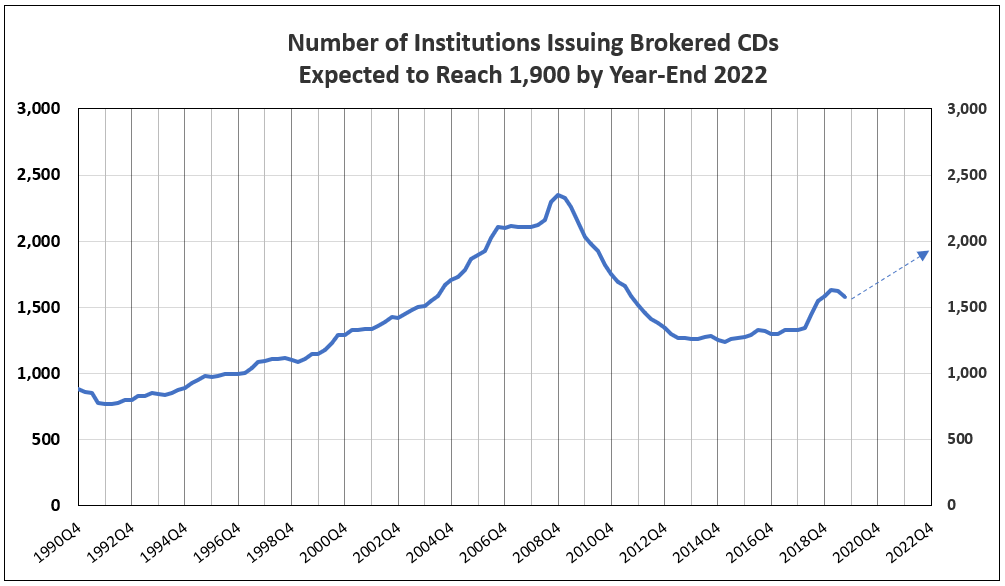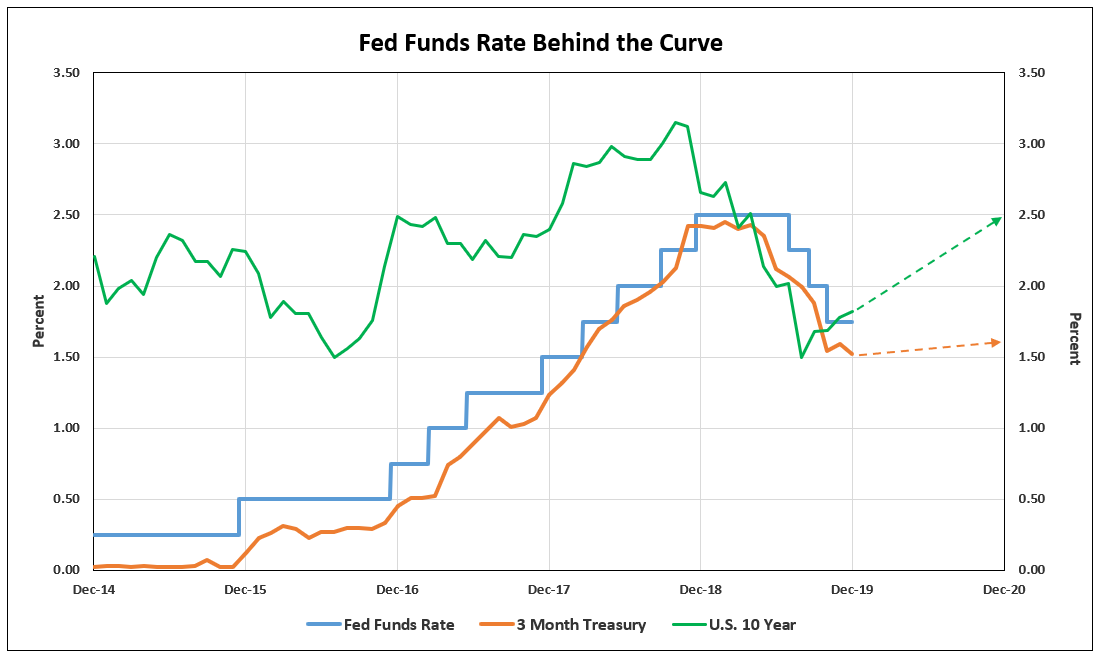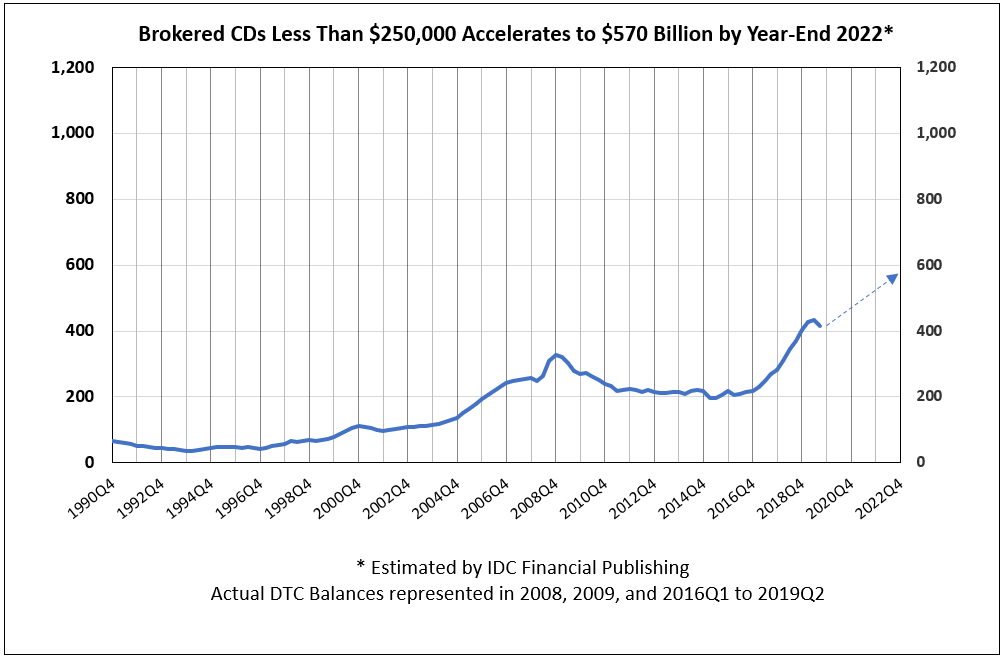Revised Estimate: Insured Brokered CDs to Increase 37% to $570 Billion by Year-End 2022
The Number of Financial Institutions Issuing Brokered CDs Continues to Grow
The number of institutions issuing brokered CDs has grown significantly since 2017. Banks, savings institutions and credit unions rose from a plateau of 1,300 in 2017 and increased to 1,638 in the 3rd quarter of 2019. However, the rise in the federal funds rate to 2.5% by year-end 2018 raised interest rates on brokered CDs above other deposit levels, as well as, above short-term T-Bill and T-Note yields. As a result, the growth in the number of institutions issuing brokered CDs less than $250,000 slowed dramatically in 2019. At IDC Financial Publishing (IDCFP), we project the growth to reoccur in 2020 with a return of a positive yield curve, and forecast the number of banks and credit unions to reach 1,900 by the end of 2022 (see Chart I & II).
Chart I

The Value of Brokered CDs per Institution Declined in the Third Quarter of 2019
The value of brokered CDs issued per financial institution grew exponentially over the last two decades, due to an increase in government insured levels to $250K, bank mergers, and strong growth in loans for those core banks and credit unions issuing brokered CDs. The value grew from an average of $65 million in 1998 to $266 million in the 2nd quarter of 2019 but declined to an estimated $262.3 million in the 3rd quarter. The inverted yield curve, that resulted from the 3-month T-Bill yield above the 10-year T-Note yield, made brokered CDs an expensive source of funding relative to loan yields (see Chart II). The reduction in the Federal Funds rate to the range of 1.75% to 1.50% on October 31, 2019 reduced the 90-day T-Bill yield to around 1.60%, below the 1.80% yield on the 10-year T-Note. A recovery in loan demand in 2020 with a continued increase in the 10-year T-Note yield toward 2.5% creates demand for brokered CDs.
Chart II

Each quarter, IDCFP divides the total brokered CDs less than $250K reported by the DTC by the total number of financial institutions issuing these CDs. This determines the estimated average value of insured brokered CDs per financial institution. In the 4th quarter of 2008, the average value peaked at $140 million, and then fell to $129 million in 2009 during the banking crisis. Since then, the value per institution has risen to an estimated $262.3 million in the 3rd quarter of 2019. We forecast this dollar growth will be $2.9 million per institution per quarter to year-end 2022, reaching a record average of $300 million per institution (see Chart III).
Chart III

Growth in Outstanding DTC Brokered CDs Forecast at $17 Billion a Quarter
As tax cuts, deregulation, infrastructure spending, and other government initiatives drive increased spending, GDP growth is expected to expand 2.5% a year. This, in turn, will create bank lending and cause an increased number of financial institutions to issue more brokered CDs. Currently, outstanding brokered CDs account for 24.4% of time deposits, up from 14.7% in the 4th quarter of 2008. This percentage of outstanding brokered CDs to time deposits has grown on trend from 2008 to 2019 and is projected to reach 25.9% by year-end 2022.
IDCFP forecasts the growth of DTC brokered CDs outstanding through year-end 2022. We multiply the number of banks, thrifts and credit unions with outstanding brokered CDs, which is expected to reach 1,900, times our estimate of the average of brokered CDs less than $250,000 per issuing financial institution, which is projected to reach $300 million. Therefore, we forecast DTC brokered CDs outstanding to increase 37% from the estimated $414 billion at 3rd quarter-end 2019, to reach $570 billion by year-end 2022 (see Chart IV).
Chart IV

For further information or to view our products and services please visit our website www.idcfp.com or contact us at 800-525-5457 or info@idcfp.com.
John E Rickmeier, CFA, President, jer@idcfp.com
Robin Rickmeier, Marketing Director
